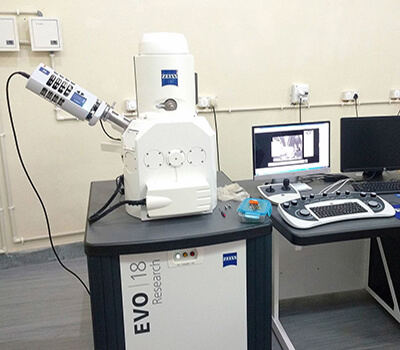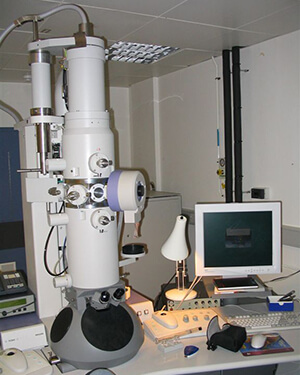9 | Electron Microscopes
Electron Microscopes
- Another type of microscope is called an electron microscope.
- Electron microscopes use beams of electrons for viewing objects.
- They are large and very powerful microscopes that require specially trained technicians to operate them.
- There are two main types of electron microscopes – scanning electron microscopes and transmission electron microscopes.
- A scanning electron microscope (SEM) produces images of the surface structure of an object.
- The specimen does not need to be sliced as electrons reflect off the specimen.
- A transmission electron microscope (TEM) produces images of the internal structure of an object.
- The specimen needs to be sliced very thinly as electrons pass through the specimen.


Scanning electron microscopes (left) and transmission electron microscopes (right) are very powerful microscopes.
(Images: Teupdeg, Wikimedia Commons; David J Morgan, Wikimedia Commons)
- Images produced by electron microscopes are black and white, but they can be converted to colour using false colour imaging.


Image of a dust mite taken with a scanning electron microscope (left).
Image of virus particles taken with a transmission electron microscope (right).
(Images: WikiImages, Pixabay; Dartmouth College Electron Microscope Facility, Wikimedia Commons)

